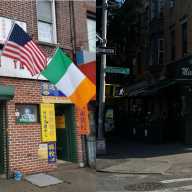In two earlier columns, we told the story of the how the Havemeyer family produced a series of cunning businessmen who built a small family sugar company into one of America’s — and the world’s — great fortunes.
The most ruthless Havemeyer male of them all was the “Sugar King,” H.O. Havemeyer, who from his East River waterfront throne ruled a vast empire that exploited workers from the Caribbean to Asia; inflated sugar prices across the U.S.; and wielded enough political influence to instigate the Spanish-American War.
The family had another side — a patrician, philanthropic, politically progressive side. A prime exemplar of these qualities was Louisine Elder Havemeyer, also known as Mrs. H.O. Havemeyer.
The union of H.O. and Louisine took place in the context of an inbred family situation typical of the American WASP elite. The Elders and the Havemeyers were New York sugar families that performed a complicated merger both at the altar and in the boardroom. From age 15, H.O. was raised by Louisine’s parents and later married Louisine’s aunt. H.O.’s older sister married Louisine’s uncle. Finally, in 1883 H.O. divorced his first wife and married her much younger niece, Louisine.
Louisine and H.O. complimented each other. Running what at the time was a vast legal monopoly — the American Sugar Refining Company — H.O. perfected the art of making boatloads of money. Louisine perfected the art of spending it.
Traveling to France as a young woman, Louisine befriended the American Impressionist painter Mary Cassatt. One day, the pair spotted a pastel for sale by the then-unknown Edgar Degas; at Mary’s urging, Louisine bought it for 500 francs, or about $100. Degas wrote her a thank you note, telling her how badly he needed the money. (The same pastel was sold by Louisine’s grandson in 1965 for $410,000.)
This was the beginning of a productive partnership. As Louisine later said, “Miss Cassatt was ever ready to recommend, Mr. Havemeyer to buy, and I to find a place for, the pictures in our gallery.”
Throughout the first two decades of the 20th century, the Havemeyers assembled an astonishing art collection. Pursuing European treasures with the same aggressiveness that he employed in swallowing up business competitors, H.O. became furious when the Italian government prevented him from exporting Botticelli’s Birth of Venus. Nevertheless, besides numerous Degas, the pair was able to buy hundreds, if not thousands, of works by Veronese, Rubens, Rembrandt, El Greco, Goya, Corot, Cezanne, Renoir, Monet and Manet.
The Havemeyer’s Romanesque mansion at Fifth Avenue and 66th street put the best of America’s public art museums to shame.
Mrs. Havemeyer’s passions also extended to radical politics. She bankrolled the women’s suffrage movement, giving fiery speeches enlivened by an automated model of the Mayflower covered with strings of electric light bulbs. She was even arrested trying to burn an effigy of President Wilson during a demonstration on the White House lawn. Refusing to pay a $5 fine, she spent three days in jail.
Meanwhile, back at the plantation, H.O. and the Sugar Trust were dealt a series of business reversals at the hands of Teddy Roosevelt and his antitrust laws. A 1921 consent decree reduced American Sugar’s effective control of the industry from 72 percent to 24 percent.
H.O. Havemeyer put up a tenacious defense. He popularized the Domino brand with its trademark white tablets and convinced Congress to support the price of sugar in order to discourage foreign imports.
H.O. is long gone, but his innovations are still with us, even if they have not always had the effect intended by their inventor. Decades of price supports, which have kept the price of sugar in the United States as high as four or five times the international price, eventually led many soft drink and candy makers to switch from cane sugar to high fructose corn syrup, a sweetener that many health experts blame for today’s American epidemic of obesity, diabetes and heart disease.
Price supports have also devastated the economies of sugar-growing regions such as the Caribbean. This has had two further effects: to cause social and political disruption that has necessitated frequent visits by the U.S. military; and to provoke mass immigration, especially by Puerto Ricans, who as American citizens have found it easy to come to New York to find jobs to replace those lost by the willful destruction of the Caribbean sugar industry.
The irony of this is particularly stark in Williamsburg. Tens of thousands of Caribbean immigrants and their descendants have outstayed H.O. Havemeyer’s mighty Domino sugar refinery, yet are no longer needed now that raw sugar imports have dwindled. Indeed, the fabled factory itself will soon be converted to thousands of apartments, mostly luxury.
The story of Louisine Havemeyer ends with a staggering act of philanthropy and humility. When she died at 73 in 1929, she left more than 1,000 paintings and sculptures to the Metropolitan Museum of Art. The Havemeyer collection remains the biggest single part of the Met. Unlike most benefactors, however, Louisine gave her gift with no requirements that her name be attached or that the works be exhibited in a certain way.
“I have made very few stipulations in my will in regard to the placing or care of the collection because I believe there are those who are as intelligent and as interested as I in the care and conservation of a valuable gift,” she wrote.
In the words of art critic Michael Kimmelman, “One of the ultimate tributes that can be paid to Louisine and Henry Osborne Havemeyer is that very few of the Metropolitan’s visitors today have a clue as to who they were.”
Tom Gilbert is a historian and writer who lives in Greenpoint.
























